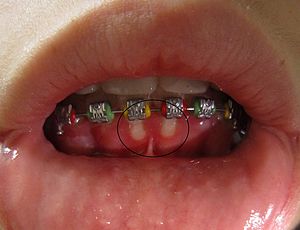
Herpetic stomatitis

Gingivostomatitis is a combination of gingivitis and stomatitis, or an inflammation of the oral mucosa and gingiva. Herpetic gingivostomatitis is often the initial presentation during the first ('primary') herpes simplex infection. It is of greater severity than herpes labialis (cold sores) which is often the subsequent presentations. Primary herpetic gingivostomatitis is the most common viral infection of the mouth. Gingivostomatitis is a combination of gingivitis and stomatitis, or an inflammation of the oral mucosa and gingiva. Herpetic gingivostomatitis is often the initial presentation during the first ('primary') herpes simplex infection. It is of greater severity than herpes labialis (cold sores) which is often the subsequent presentations. Primary herpetic gingivostomatitis is the most common viral infection of the mouth. Primary herpetic gingivostomatitis (PHGS) represents the clinically apparent pattern of primary herpes simplex virus (HSV) infection, since the vast majority of other primary infections are symptomless. PHGS is caused predominantly by HSV-1 and affects mainly children. Prodromal symptoms, such as fever, anorexia, irritability, malaise and headache, may occur in advance of disease. The disease presents as numerous pin-head vesicles, which rupture rapidly to form painful irregular ulcerations covered by yellow–grey membranes. Sub-mandibular lymphadenitis, halitosis and refusal to drink are usual concomitant findings.
